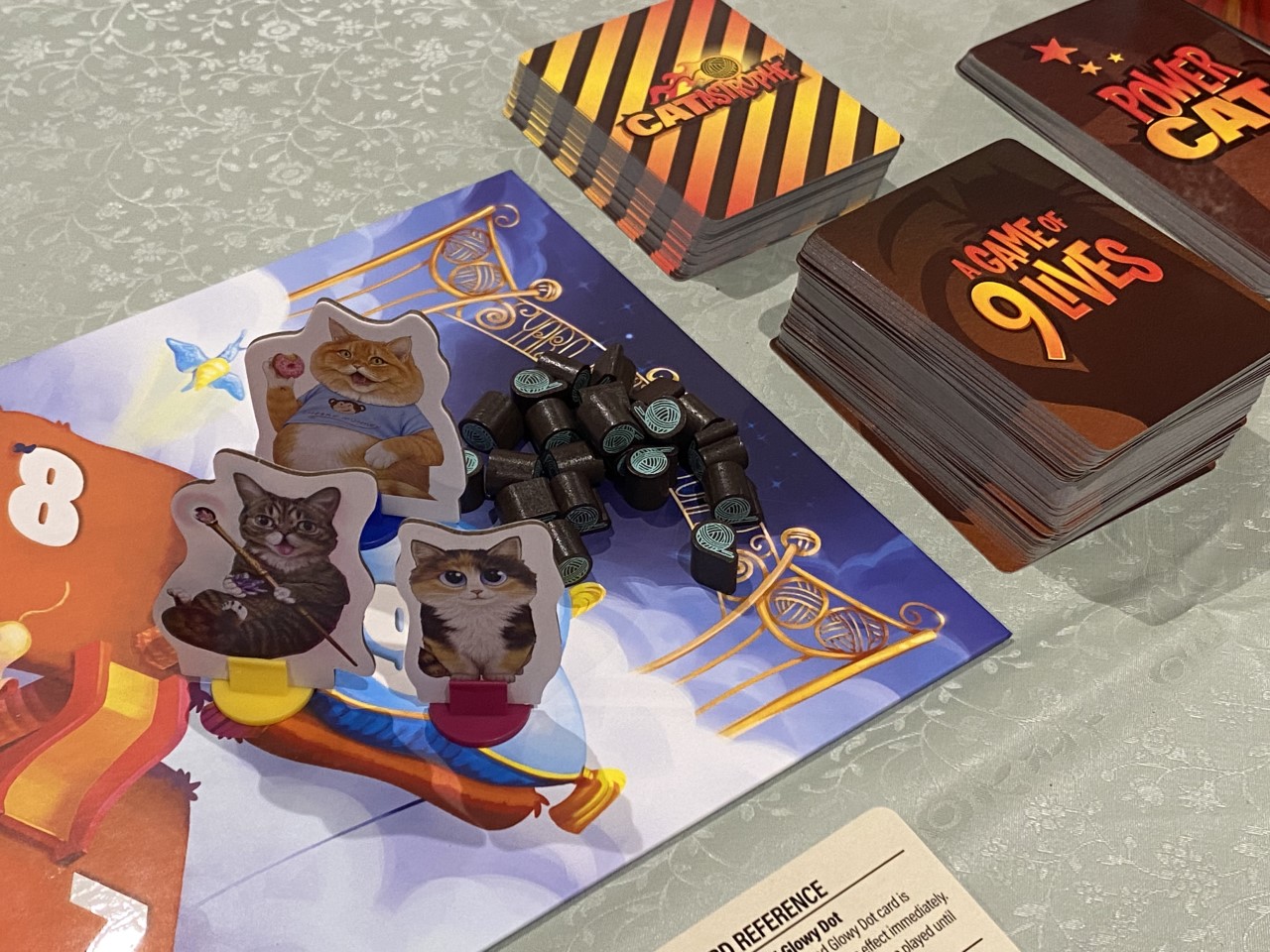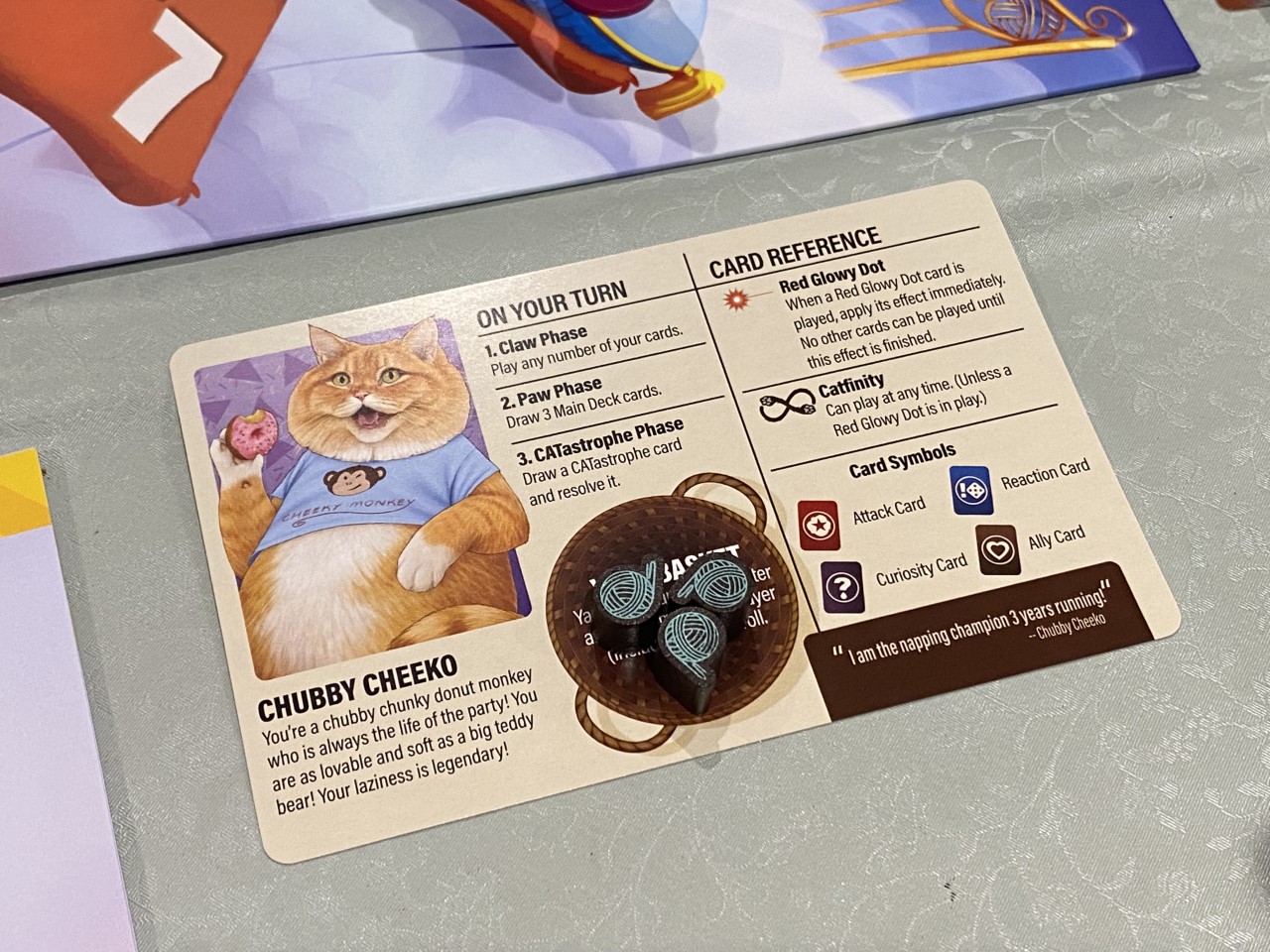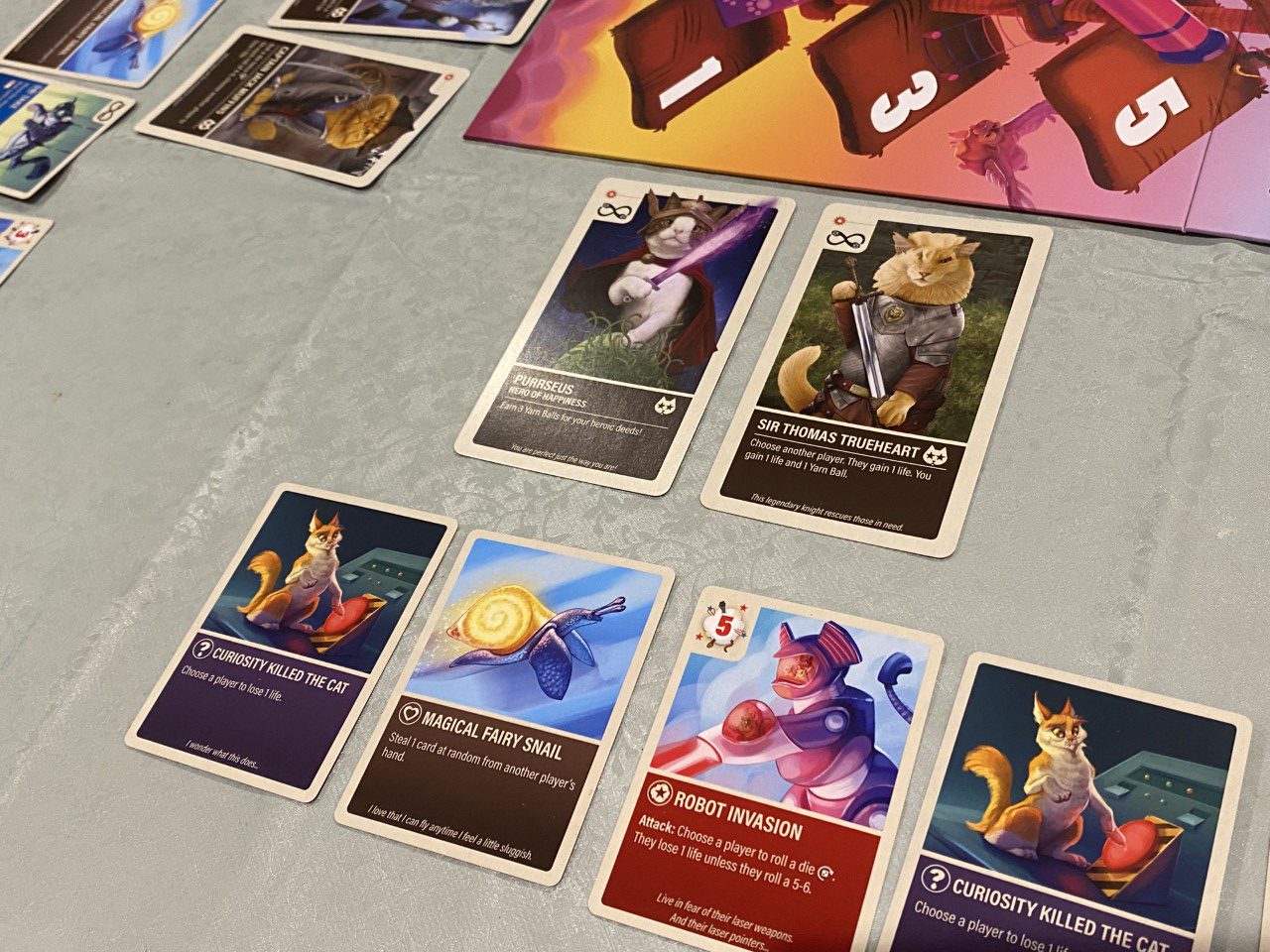CATastrophe: a Game of 9 Lives is a mean party game for kids and adults alike
Anyone who has a pet cat will know that even though our feline friends can be cute and cuddly, most cats are absolute b**tards. A cat will always put its own interests ahead of anyone else, and that’s pretty much what CATastrophe: a Game of 9 Lives replicates — the opportunity to think and act like a cat in order to bump off your friends and reign supreme.
As the name indicates, each player starts the game with exactly nine lives. They’ll choose a cat to represent them in the game (but there’s no gameplay difference between them) and draw two Super Cat cards plus a hand of regular cards to play with. Super Cat cards are placed face up and are seen by all players, whilst each player keeps their five normal cards secret. Three yarn balls are also dealt out to each player, and these can be used for rerolls during the game.

The board itself features nine spaces which represent those nine lives, and each player cat begins at the top. On the bottom space will be The Grim Reapurrr — and if a player cat ever ends their turn on the same space as the Reapurrr, then it will be killed and that player is out of the game… For anyone wondering, the Reapurrr can go up the track as well as the players going down, so the whole “nine lives” thing is a slightly fluid, abstract concept.
Turns are relatively simple in CATastrophe: a Game of 9 Lives. A player simply chooses to play as many of their cards as they wish – and can also use the abilities of their Super Cat(s) as long as it makes sense to do so based on the printed text. Cards in hand come in a few different types — many of which are attacks, some of which are reaction cards and probably the fewest of all of which are considered to be ally cards.

Ally cards are usually simple, and allow a player to do something self-explanatory – often drawing another Super Cat card, allowing a player to gain health, or sometimes damaging an opponent (note that this doesn’t count as an attack). For attack cards, the player will usually target another player and then declare what kind of attack is going to happen. In most cases, the targeted player will need to roll a dice and may lose lives depending on what they roll — bearing in mind that those yarn balls I mentioned earlier can be used to reroll.
The final kind of standard card is the reaction, which is typically used by a player being attacked in response to that attack. The Cucumber card, for example, allows a player to completely block (and therefore cancel) an attack, whilst other reaction cards do things like deflect an attack onto another player – potentially including the one who launched the attack.

After a player has used as many of these cards as they wish or can, they will need to draw and resolve a CATastrophe card. These cards are mostly minigames that all players participate in, and some examples include rolling dice over and over until you get two sixes in a row to gain a life, or throwing your dice toward the box lid and losing a life if you miss. Most of these are quick and fun, requiring little to no explanation and often resulting in one or two cats moving up or down the life tracker.
CATastrophe: a Game of 9 Lives is not the kind of game that you need to overthink. At first glance, I felt like this was a more serious game than it turned out to be — there are several decks, the turn order sounds almost like that of a deckbuilding game when you read it, and there’s a fair number of components in the box. Forget all that — Super Cats may be these big tarot cards with lots of art and symbols, but the abilities often boil down to “take three yarn” or “gain one life, choose an opponent to lose a life” etc and they are meant to be used — if you need one, then just do so — don’t be tempted to save it for some big turn later on.

Equally, you will draw three cards at the end of each turn, so ideally you’ll want to use at least three on your turn – but if you can use all five, it is often best to just do so. There is some logic to holding perhaps one or two back simply to bluff that you have a reaction card, but if you start your turn with five attacks, you might as well use at least three to give yourself the chance to draw into some reaction cards to defend yourself against the following players.
In my view, CATastrophe: a Game of 9 Lives is very much a party game — it supports from two to six players and for me, it feels a bit flat at 2-3 and a bit chaotic at 5-6, making four the optimal number of players without question. I’ve played CATastrophe: a Game of 9 Lives with both kids and adults, and I would suggest that despite the theme and overall silliness, this is more a game for fun-loving adults than it is for kids. There’s no questionable content, but CATastrophe: a Game of 9 Lives is an intensely mean game, and it may not always work for younger players as a result.

If you’re in the market for an exceptionally well-produced party game that has a bit more meat on it than most and which brings a lot of mean interaction and some highly luck dependent gameplay, CATastrophe: a Game of 9 Lives fits that niche. I honestly can’t really think of anything else like it, although that is probably as much because no one realised that such a game was needed as it is anything else. Still, CATastrophe: a Game of 9 Lives is a fun game for the odd dalliance — I wouldn’t play it over and over again, and I will always choose it carefully depending on the group, but when it fits with what everyone likes, it’s a good choice.
You can pre-order a copy of CATastrophe: A game of 9 Lives on their website.
Comments are closed.